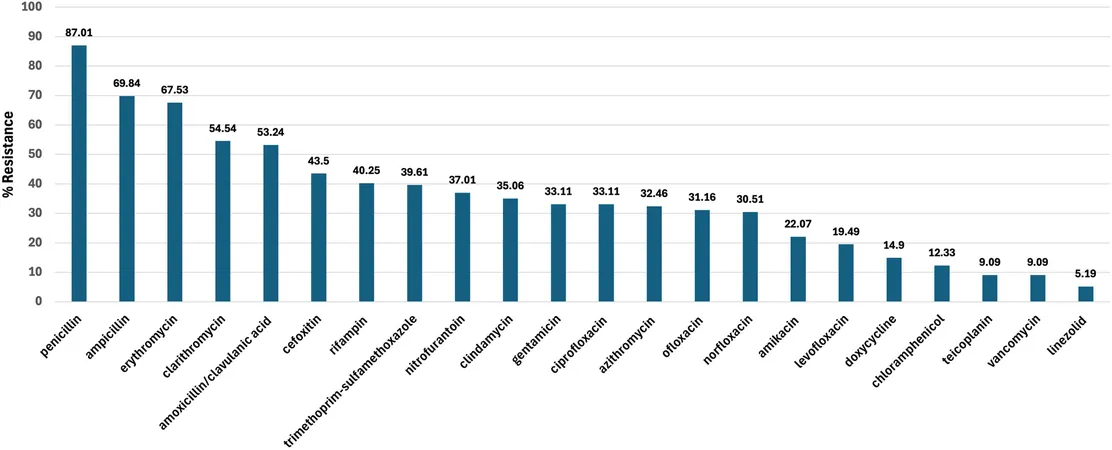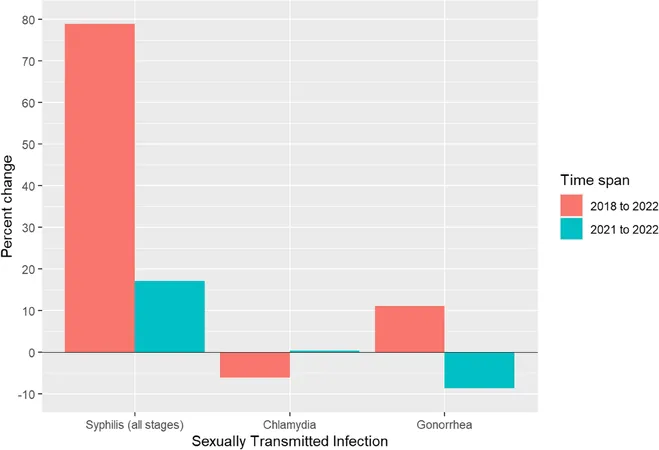
Revolutionary Pristinamycin Combos Take on Superbugs: The Battle Against MRSA Intensifies!
2025-09-16
Author: Daniel
Unmasking the Deadly Threat: Staphylococcus aureus
When it comes to purulent skin infections, one villain lurks behind many wounds: Staphylococcus aureus (S. aureus). This notorious bacterium is known for causing everything from mild skin woes to life-threatening bloodstream infections, making it one of the most frequent invaders in hospitals and chronic wounds.
The MRSA Menace: A Global Health Challenge
Adding to the crisis is methicillin-resistant Staphylococcus aureus (MRSA), which not only complicates treatment options but also significantly hampers recovery efforts. With increasing virulence and antibiotic resistance, MRSA has positioned itself as a formidable challenge in the medical community, raising concerns from hospital beds to global health organizations.
The Antibiotic Arms Race
Antibiotic resistance is escalating, especially against last-line treatments like linezolid and daptomycin. Notably, the resistance to vancomycin is on the rise, although it remains relatively rare. Among the World Health Organization's top threats, MRSA is desperately in need of effective treatments.
Introducing Pristinamycin: A Hopeful Ally in the Fight
Amidst this dire situation, scientists are rediscovering pristinamycin, a member of the macrolide-lincosamide-streptogramin B (MLSB) class of antibiotics. This naturally occurring streptogramin could be the key to overcoming the challenge posed by MRSA and its resistant counterparts. Pristinamycin's unique dual-component design offers a synergistic effect that can bust through bacterial defenses.
Diving Into the Study: The Quest for Efficacy
Conducted at Demerdash Hospital in Cairo, Egypt, a groundbreaking study over 12 months analyzed 467 clinical samples. Researchers zeroed in on 276 specimens that tested positive for S. aureus, revealing alarming rates of resistance to commonly used antibiotics.
The Numbers Don't Lie: Resistance Statistics
Staggeringly, 87% of isolates resisted penicillin, and over 67% showed no mercy to erythromycin.While vancomycin and linezolid still maintain efficacy, the resistance landscape is shifting, with more than 43% of isolates identified as multidrug-resistant (MDR).
Exploring Combination Therapy: A New Hope?
In a bold move, researchers tested various combinations of pristinamycin with other antibiotics, like doxycycline and linezolid, discovering high rates of synergism. PST paired with doxycycline showed an impressive 82.13% success rate against MDR S. aureus—indicating a pathway to potentially revolutionize treatment protocols!
Why It Matters: The Threat is Real!
With limited treatment options, the rise of McRSA poses significant health risks. As traditional antibiotics falter, the introduction of new combinations like pristinamycin is crucial for effective management of these infections.
The Call to Action: What’s Next?
As we delve deeper into the fight against antibiotic resistance, the findings stress the urgent need to identify effective therapies. Pristinamycin is showing promise, and further exploration in clinical settings could pave the way for innovative treatment strategies in combatting MRSA and its ilk.
Stay tuned as researchers continue to navigate this evolving battlefield with antimicrobial agents like pristinamycin, reminding us that the battle against superbugs is far from over!





 Brasil (PT)
Brasil (PT)
 Canada (EN)
Canada (EN)
 Chile (ES)
Chile (ES)
 Česko (CS)
Česko (CS)
 대한민국 (KO)
대한민국 (KO)
 España (ES)
España (ES)
 France (FR)
France (FR)
 Hong Kong (EN)
Hong Kong (EN)
 Italia (IT)
Italia (IT)
 日本 (JA)
日本 (JA)
 Magyarország (HU)
Magyarország (HU)
 Norge (NO)
Norge (NO)
 Polska (PL)
Polska (PL)
 Schweiz (DE)
Schweiz (DE)
 Singapore (EN)
Singapore (EN)
 Sverige (SV)
Sverige (SV)
 Suomi (FI)
Suomi (FI)
 Türkiye (TR)
Türkiye (TR)
 الإمارات العربية المتحدة (AR)
الإمارات العربية المتحدة (AR)